Abstract
STUDY OBJECTIVE: To examine the association between parental smoking habits and the nutrient intake and food choice of teenagers aged 16-17 years, allowing for differences in teenage smoking and the social class and regional distribution of the participants. DESIGN: Data were collected from the 1970 longitudinal birth cohort, cross-sectionally at 16-17 years. The smoking habits of teenagers were evaluated from a questionnaire completed by the subjects themselves, and the smoking habits of parents by interview. The nutrient and food intakes of teenagers were quantitatively assessed using a four day unweighed dietary diary. SETTING: The participants were distributed throughout Britain. PARTICIPANTS: A subsample of 1222 males and 1735 females was isolated from respondents to the 1970 birth cohort 16-17 year data collection sweep undertaken in 1986-87. MAIN RESULTS: Parental smoking habits were associated with different dietary patterns among teenagers regardless of whether the teenagers themselves smoked. Dietary differences noted were similar to those observed previously among smokers, with lower intakes of fibre, vitamin C, vitamin E, folates, and magnesium in particular reported among both males and females in households where parents were smokers. These lower intakes were associated with lower intakes of fruit juices, wholemeal bread, and some vegetables. CONCLUSION: Teenagers who lived with parents who smoked had different nutrient and food intakes to those with non-smoking parents, and teenagers exposed to parental smoking appeared to have similar dietary patterns to teenagers who themselves smoked.
Full text
PDF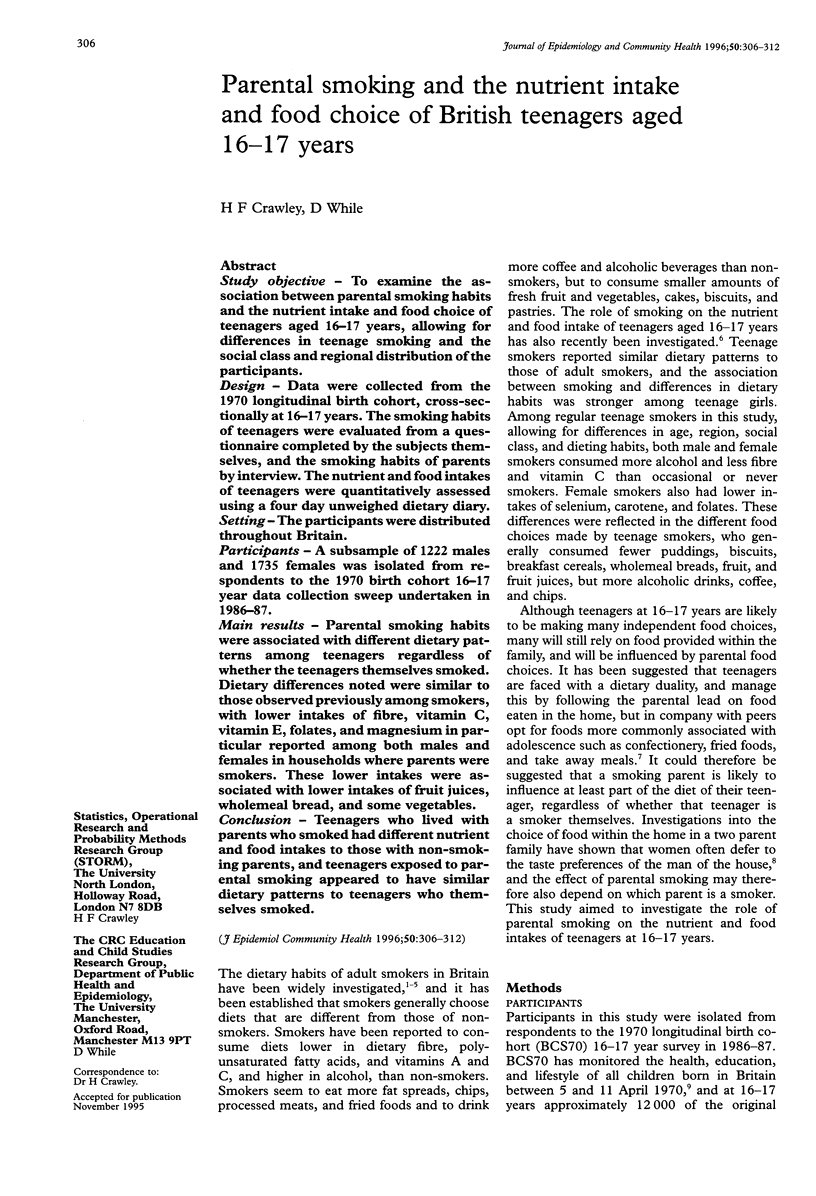
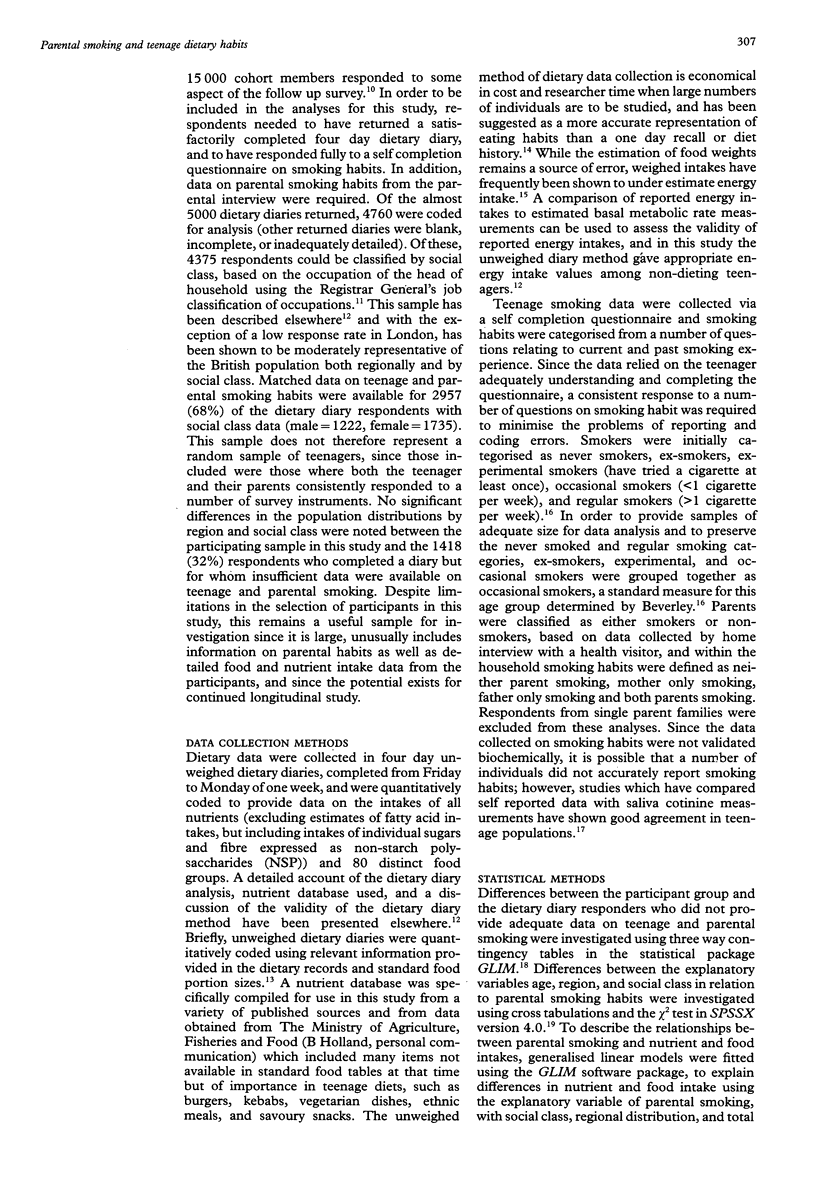
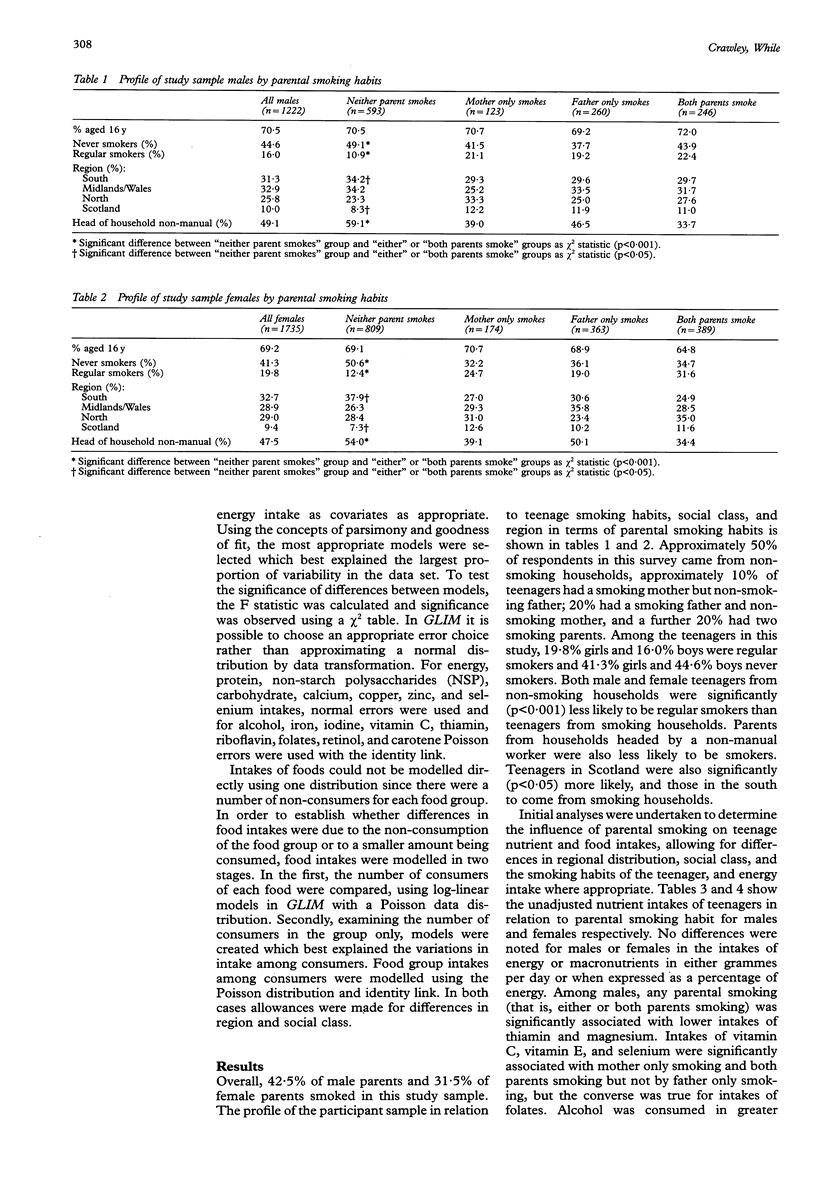
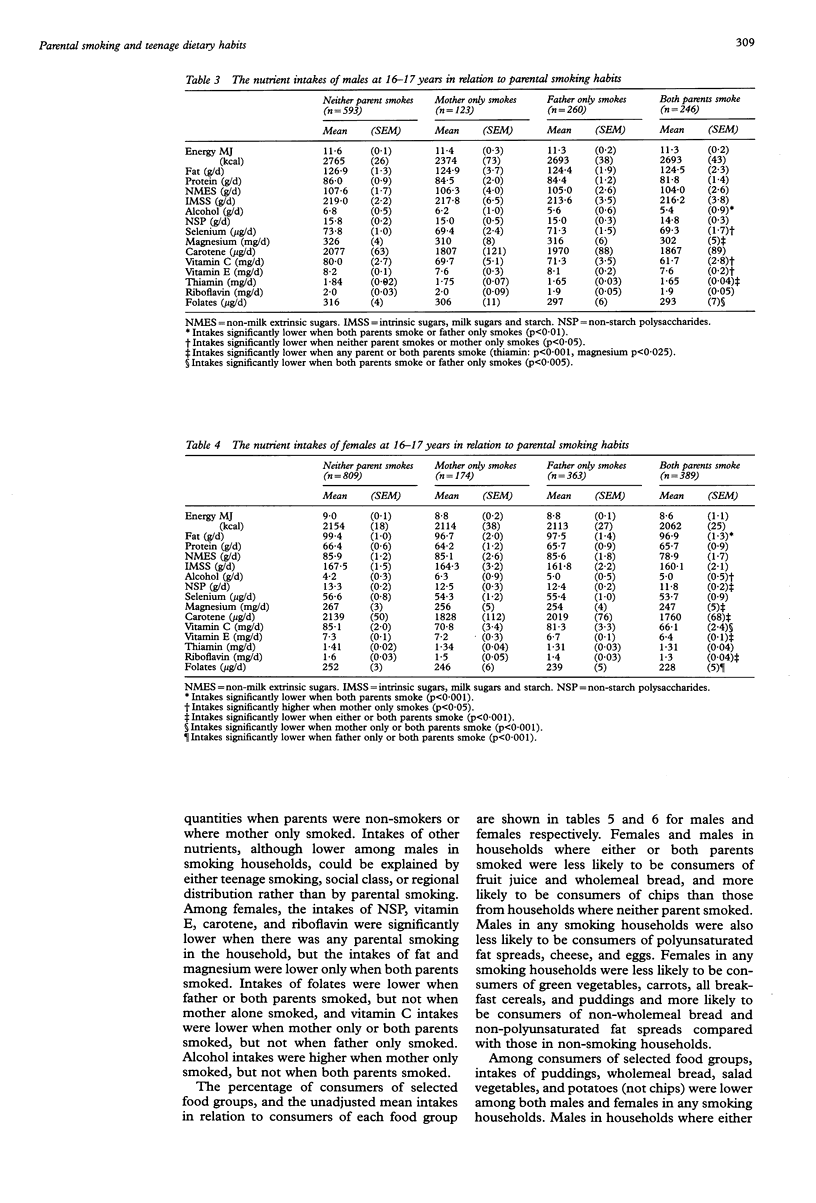


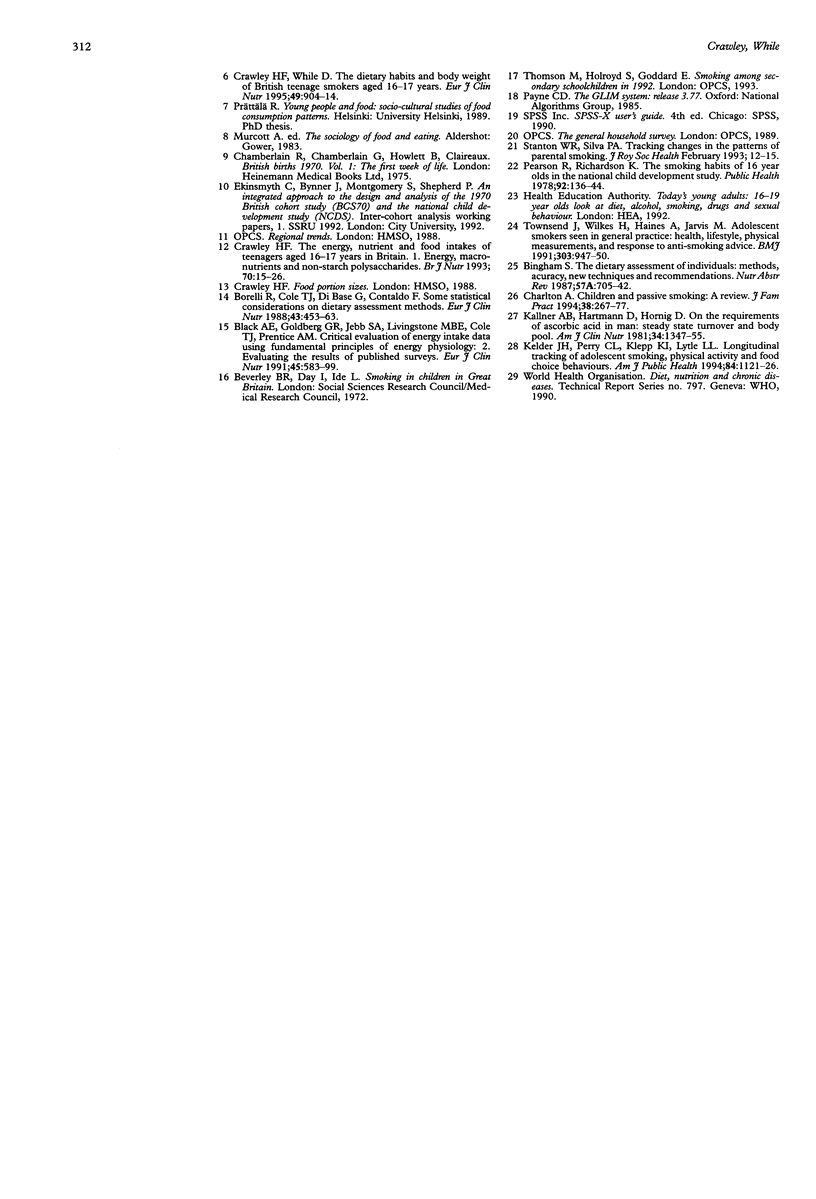
Selected References
These references are in PubMed. This may not be the complete list of references from this article.
- Black A. E., Goldberg G. R., Jebb S. A., Livingstone M. B., Cole T. J., Prentice A. M. Critical evaluation of energy intake data using fundamental principles of energy physiology: 2. Evaluating the results of published surveys. Eur J Clin Nutr. 1991 Dec;45(12):583–599. [PubMed] [Google Scholar]
- Borrelli R., Cole T. J., Di Biase G., Contaldo F. Some statistical considerations on dietary assessment methods. Eur J Clin Nutr. 1989 Jul;43(7):453–463. [PubMed] [Google Scholar]
- Charlton A. Children and passive smoking: a review. J Fam Pract. 1994 Mar;38(3):267–277. [PubMed] [Google Scholar]
- Crawley H. F. The energy, nutrient and food intakes of teenagers aged 16-17 years in Britain. 1. Energy, macronutrients and non-starch polysaccharides. Br J Nutr. 1993 Jul;70(1):15–26. doi: 10.1079/bjn19930101. [DOI] [PubMed] [Google Scholar]
- Crawley H. F., While D. The diet and body weight of British teenage smokers at 16-17 years. Eur J Clin Nutr. 1995 Dec;49(12):904–914. [PubMed] [Google Scholar]
- Fehily A. M., Phillips K. M., Yarnell J. W. Diet, smoking, social class, and body mass index in the Caerphilly Heart Disease Study. Am J Clin Nutr. 1984 Oct;40(4):827–833. doi: 10.1093/ajcn/40.4.827. [DOI] [PubMed] [Google Scholar]
- Kallner A. B., Hartmann D., Hornig D. H. On the requirements of ascorbic acid in man: steady-state turnover and body pool in smokers. Am J Clin Nutr. 1981 Jul;34(7):1347–1355. doi: 10.1093/ajcn/34.7.1347. [DOI] [PubMed] [Google Scholar]
- Margetts B. M., Jackson A. A. Interactions between people's diet and their smoking habits: the dietary and nutritional survey of British adults. BMJ. 1993 Nov 27;307(6916):1381–1384. doi: 10.1136/bmj.307.6916.1381. [DOI] [PMC free article] [PubMed] [Google Scholar]
- Pearson R., Richardson K. The smoking habits of 16-year-olds in the National Child Development Study. Public Health. 1978 May;92(3):136–144. doi: 10.1016/s0033-3506(78)80051-1. [DOI] [PubMed] [Google Scholar]


